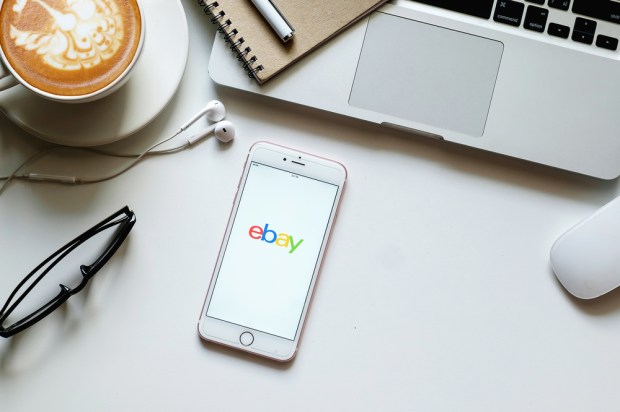Shoppable Photos Create eCommerce Referrals For Retailers

News photos can showcase the latest in fashion and style of Hollywood actors, but it’s not so easy to purchase items from a celebrity’s wardrobe. Through a partnership with eBay, Mashable is making the task of finding that suit, dress or accessory a little bit easier.
While the program is still just a pilot, journalists working for Mashable will be able to take a photo of, say, a celebrity and tag elements of his or her outfit with links to similar products available for sale on eBay. To purchase the items, a reader simply clicks on the links, which come in the form of shopping tag icons embedded in the photo.
For example, Mashable published a photo of Tom Hardy at the 2017 “Dunkirk” premiere in London. If a user were to click an icon on Hardy’s tie, he or she would be directed to a stylish — but affordable — TieMart Burgundy and Black Extra Long Striped Tie for $12.50 on eBay.
If that consumer bought the tie, Mashable might get a portion of the sale: “If you buy something featured, we may earn an affiliate commission, which helps support our work,” reads a disclaimer on a Mashable article with eBay links.
The genesis behind the service is to reduce friction in the shopping experience of Mashable customers. “We wanted to bring a simplified shopping experience that brings products to Mashable’s passionate audience rather than expect them to come to us,” Dan Burdett, head of eBay EMEA Marketing Lab, said in announcement.
The pilot partnership with Mashable comes from eBay’s Marketing Lab, which is tasked with “developing disruptive marketing solutions.” The lab hopes to learn how to increase sales through the eBay platform. “By introducing the new eBay widget to Mashable, the team will be able to better understand the factors that matter most to buyers making purchases off the eBay platform, such as seller reputation and delivery time,” the company said in an announcement.
The company’s announcement comes on the heels of news that it launched two new visual search tools that allow people to use photos they have taken or downloaded from the internet to find matching products from among eBay’s 1.1 billion listings. The image recognition features — Find It On eBay and Image Search — went live on eBay’s mobile app in 2017.
Contextual Commerce
If eBay and Mashable’s approach to shoppable content seems familiar, it’s because several platforms have been experimenting with interactive photos and music streams that direct potential customers to eCommerce sites. The concept is known as contextual commerce, and it can be as simple as having a fan listen to a song on Spotify and being prompted to buy merchandise directly connected to the artist.
Through a partnership with Merchbar, Spotify, makeup artist Pat McGrath and musician Maggie Lindemann, for example, Spotify listeners were able to buy an exclusive line of cosmetics that allows the shopper to adopt Lindemann’s “look.” By using her music to promote the products, Merchbar was able to tap into her fan base.
“Maggie is very influential and has a massive musical following combined with a huge social following,” Edward Aten, the CEO and founder of Merchbar, told PYMNTS’ Karen Webster. “She is one of those next-generation influencers and content creators that people love to follow across platforms.”
Beyond music artists, brands that want to sell goods through photos can turn to platforms such as Shopify, which allows them to make Instagram tags into actionable eCommerce links. Shopify already has integration with Facebook, Facebook Messenger, Buzzfeed and others, reported TechCrunch.
TechCrunch noted that Shopify has said Instagram is a big driver of merchant store traffic and that the service could result in increased eCommerce sales.
Beyond Photos and Music
As eCommerce retailers like eBay seek to grow different channels for sales, what’s next after shoppable images? Perhaps more shoppable videos. MikMak’s Attach, for example, allows customers to swipe up and land on an entertaining infomercial for the product on Snapchat or Instagram. They can then hit a button to add the product to the retailer’s cart or just tap the screen to watch more minimercials for products made by the same retailer.
With technology like MikMak’s and news sites like Mashable, perhaps content and eCommerce companies can team up to make shoppable news videos. With such a concept, viewers of a Mashable video could shop the wardrobe of, say, Hardy walking the carpet at the “Dunkirk” premiere.
